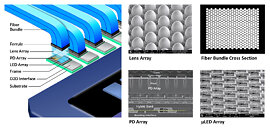Aledia to Showcase FlexiNova at Display Week 2025 — A Customizable MicroLED Platform for Next-Gen Screens
At Display Week 2025, Aledia, the leader in nanowire and 3D silicon-based microLED display technology, will showcase FlexiNOVA - a new product-ready platform built on its proprietary nanowire microLED technology and designed to scale production of next-gen displays. With its first industrial chip format now defined and available for sampling in 6 V and 9 V variants starting in H2 2025, FlexiNova empowers OEMs and display makers to integrate microLEDs into devices as diverse as smartwatches, automotive dashboards, luxury TVs and ultra-high-resolution monitors while maximizing power efficiency.
To bring microLED to mass production, performance alone isn't enough—industrial viability is key. Until now, microLEDs have mostly stayed in the lab due to high costs and manufacturing challenges for chips smaller than 30 µm. FlexiNOVA removes these barriers, making it easier for manufacturers to transition to microLED displays, which are brighter, more energy-efficient and have a longer battery life than OLED and LCD. What makes FlexiNOVA stand out is its flexibility: chip size, shape and power usage can be tailored to product needs without sacrificing performance.
To bring microLED to mass production, performance alone isn't enough—industrial viability is key. Until now, microLEDs have mostly stayed in the lab due to high costs and manufacturing challenges for chips smaller than 30 µm. FlexiNOVA removes these barriers, making it easier for manufacturers to transition to microLED displays, which are brighter, more energy-efficient and have a longer battery life than OLED and LCD. What makes FlexiNOVA stand out is its flexibility: chip size, shape and power usage can be tailored to product needs without sacrificing performance.


















